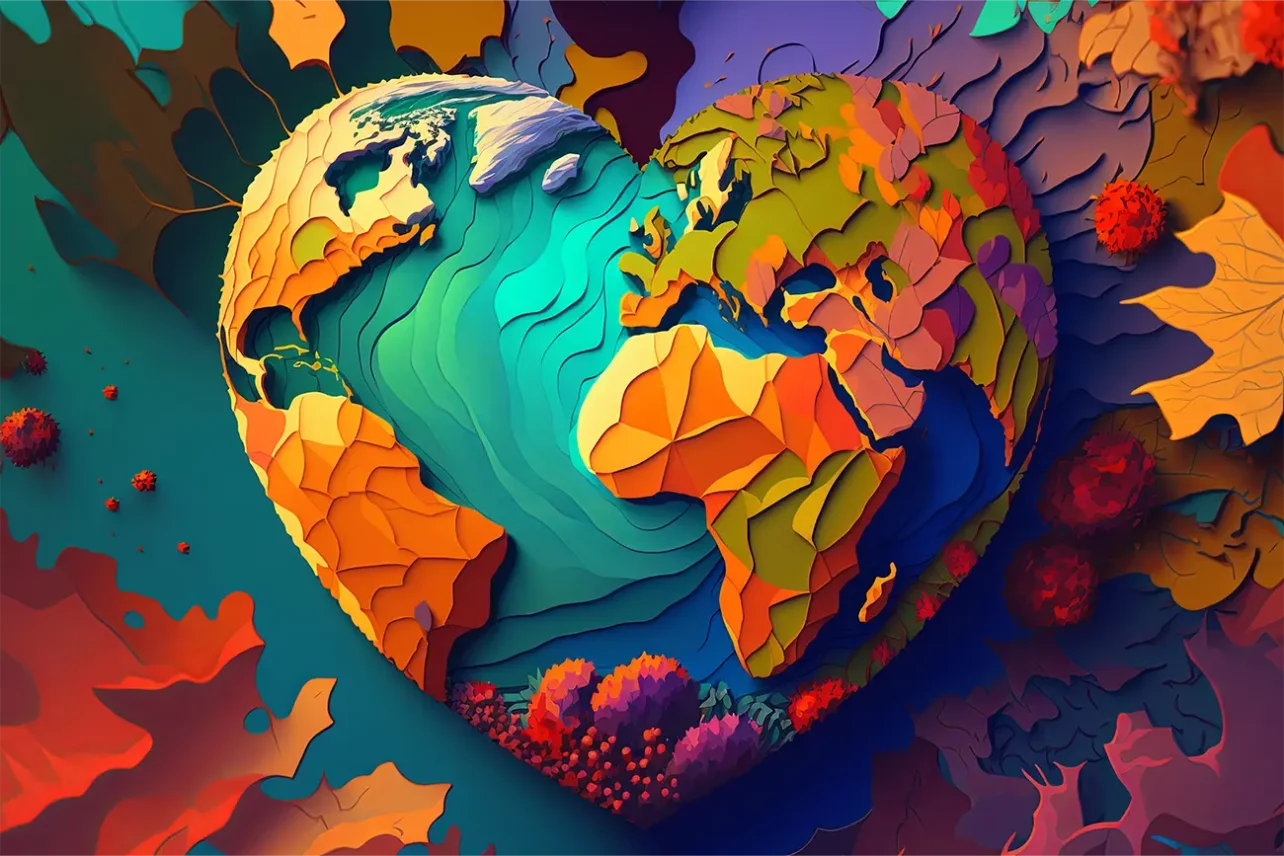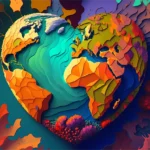In today’s rapidly globalizing world, the buzz around diversity and inclusion is louder than ever. However, there’s a marked difference between merely championing these terms and actively cultivating an inclusive environment that values diverse perspectives.
As we move through the 21st century, there’s an urgent need to look beyond the hashtags and slogans. We must focus on real, tangible changes that not only acknowledge diversity but also celebrate it.
This journey takes us from boardrooms to movie sets, from schoolrooms to community events, illustrating that the embrace of diversity is not just a moral obligation—it’s a formula for success, growth, and understanding in our interconnected world.
Historical Context: The Arc of Diversity and Its Evolution
Historically, societies have always been diverse, influenced by migration, trade, conquests, and cultural exchanges.
Ancient cities such as Alexandria in Egypt or Rome in Italy thrived as melting pots of various cultures and traditions. The famed Silk Road facilitated not just the exchange of goods, but also ideas, religions, and philosophies between the East and West.
Diversity has always been a hallmark of vibrant, thriving societies.
However, despite these rich historical tapestries of coexistence, the annals of history are also filled with periods of resistance to diversity—times when differences in race, religion, or culture became sources of division rather than unity.
From the persecution of religious minorities to the horrors of colonialism and the transatlantic slave trade, humanity has grappled with a dichotomous relationship with diversity: at times embracing it, and at other times, rejecting or even fearing it.
In the 20th century, as nations underwent decolonization and the global civil rights movement gained momentum, there was a significant shift in the narrative. The horrors of World War II and the Holocaust served as stark reminders of where intolerance could lead.
The ensuing decades saw the rise of anti-discrimination laws, affirmative action, and international treaties promoting human rights. Diversity and inclusion began to be seen not just as moral imperatives but as socio-economic necessities.
Fast forward to the digital age, and we find ourselves in a world that’s more connected than ever before. The internet, global media, and ease of travel have blurred traditional borders, making the embrace of diversity more critical than ever. Yet, this interconnectedness also comes with its challenges.
While opportunities to learn from different cultures have exponentially grown, so have the platforms for spreading prejudice and misinformation.
Understanding this historical context is crucial. It reminds us that our current discussions about diversity are not new—they are rooted in centuries of social evolution, lessons learned, and progress made.
As we delve into modern examples of societies embracing diversity, we must remember that we stand on the shoulders of those who came before us, paving the way for a more inclusive future.
The Corporate World Embracing Diversity
The modern corporate landscape is increasingly recognizing the manifold benefits of a diverse workforce. This shift isn’t just driven by ethical imperatives but also by tangible, quantifiable advantages.
Diversity in Numbers:
Recent data highlights the upward trajectory in the commitment of businesses to foster diversity. According to a various studies:
- Diverse Hires: Businesses that are open to inclusion have 120% higher chances to accomplish financial goals.
- Women in Leadership: The percentage of women occupying C-suite positions has risen to 25%, a significant leap from just over 14% recorded a decade ago.
- Representation and Higher Work Engagement: Staff who feel valued and represented within their company are three times more likely to commit to organizational missions and goals than those who do not.
Sources: Team Stage, 2023; Korn Ferry, 2023; Catalyst, 2013; McKinsey Group, 2020
Benefits Observed:
- Innovation Boost: A study by the McKinsey Group found that companies with diverse teams were 33% more likely to outperform their peers in terms of profitability. Diversity brings a myriad of perspectives, fostering creativity and innovation.
- Improved Decision Making: Diverse teams draw from a broader set of experiences, leading to more comprehensive analyses and well-informed decisions. According to a report by the Boston Consulting Group, diverse management teams result in 19% higher revenues due to innovation.
- Attracting Talent: In a survey by Glassdoor, 76% of job seekers mentioned that a diverse workforce is crucial when evaluating job offers. Companies committed to diversity are therefore better positioned in the competitive talent market.
- Reflecting the Global Market: For companies operating globally, having a diverse team is not a luxury—it’s a necessity. It ensures that strategies, products, and services resonate with a global audience, crossing cultural and geographical boundaries.
- Enhanced Company Reputation: An organizational commitment to diversity often translates into a positive public image, which can lead to increased customer loyalty and better stakeholder relations.
Sources: McKinsey Group, 2018; Forbes, 2018; Glassdoor Survey, 2021
The corporate commitment to diversity is no longer just a nod to social responsibility—it’s an essential ingredient for growth, innovation, and sustainability. Companies today realize that in embracing diversity, they aren’t just ticking a box; they’re future-proofing their businesses.
Film and Entertainment Industry’s Evolution
The film and entertainment world has often been seen as a reflection of society’s desires, fears, and values. Historically, it was criticized for not providing a true mirror to the diverse world we live in, but the tides have been turning over the past decade.
Increasing Representation:
Recent years have marked a dramatic shift in the industry, with an increasing number of movies, TV shows, and music tracks focusing on or featuring minorities, the LGBTQ+ community, and a plethora of cultures. Key indicators of this change include:
- Movies: Films such as “Crazy Rich Asians”, “Black Panther”, and “Moonlight” not only shattered box office records but also broke numerous representation barriers. Their success paved the way for many more diverse stories to be told.
- Television: TV shows like “Pose”, “Master of None”, and “One Day at a Time” bring authentic stories of minorities and the LGBTQ+ community to millions of living rooms globally.
- Music: Artists like Janelle Monáe, Lil Nas X, and BTS are redefining genres and breaking boundaries, both in terms of their identity and the cultural stories they tell through their music.
Benefits Observed:
- Authentic Storytelling: When stories are told by those who’ve lived them, or when there’s significant involvement from those communities in the storytelling process, the narratives resonate more deeply and genuinely with audiences.
- Global Resonance: Movies and songs that represent a broad spectrum of identities and cultures often find global audiences, as they appeal to universal themes of love, struggle, triumph, and identity.
- Economic Impact: The success of diverse movies and TV shows has dispelled the myth that stories from minority or non-Western cultures won’t succeed at the box office or with viewership ratings. “Black Panther: Wakanda Forever”, for instance, grossed over $3 billion worldwide.
- Shifting Social Paradigms: Representation in media has the power to shape societal perceptions. By showcasing varied identities in positive, empowering roles, entertainment can combat stereotypes and promote understanding.
- New Creative Avenues: Diversity in storytelling has opened the door to previously unexplored narratives, giving audiences fresh, innovative content.
Sources: Collider, 2022
In the constantly evolving landscape of the entertainment industry, diversity is not just a buzzword; it’s the very fabric that enriches storytelling. The power of representation has only begun to show its true potential, promising a future where everyone can see a bit of themselves on the screen or hear echoes of their experiences in a song.
Education’s Shift Towards Global Consciousness
The foundation of a progressive society often lies in its educational institutions. Schools and universities, as the nurturing grounds for future generations, play a pivotal role in shaping collective consciousness. One of the significant shifts observed in modern educational systems is their move towards a more inclusive and globalized curriculum.
Incorporating Global Perspectives:
To prepare students for a world that is increasingly interconnected, many educational institutions are:
- Broadening Curricula: From introducing texts by authors from diverse ethnic and cultural backgrounds in literature classes to integrating global events and perspectives in history lessons, schools are ensuring students receive a holistic education.
- Inclusive Training: Institutions are not just stopping at curricula. Teacher training programs now often emphasize methods to make classrooms more inclusive. Workshops that combat unconscious bias, and tools to recognize and celebrate differences, are becoming commonplace.
- Global History and Culture Studies: Instead of a Euro-centric view, more schools and universities are offering courses that delve deep into the histories, contributions, and cultures of regions like Africa, Asia, Latin America, and Oceania.
Benefits Observed:
- Holistic Worldview: Students exposed to diverse perspectives tend to develop a more rounded and comprehensive understanding of the world. They’re not just learning facts; they’re gaining insights into different ways of thinking and living.
- Fostering Empathy: Understanding different cultures and histories allows students to develop empathy. When they read stories or learn about events from around the world, they can put themselves in others’ shoes, bridging emotional and cultural gaps.
- Preparation for a Global Workforce: Today’s job market values individuals who can navigate different cultural contexts. By exposing students to global content, schools are equipping them with the soft skills needed in a multicultural work environment.
- Combating Stereotypes: A curriculum rich in diverse content challenges stereotypes and preconceived notions. Students learn to critically evaluate information and to approach subjects with an open mind.
- Encouraging Critical Thinking: Analyzing different cultural contexts, histories, and perspectives demands critical thinking. Students learn not just to accept but to question, analyze, and form their own opinions.
Sources: National Education Association, 2021; UNESCO Global Education Monitoring Report, 2020
Education, in essence, is not just about imparting knowledge but about cultivating understanding. By embracing diverse curricula and global perspectives, educational institutions are laying the groundwork for a future society that values, respects, and understands its inherent diversity.
Diversity has always been a hallmark of vibrant, thriving societies.
Challenges in the Path to Genuine Diversity and Inclusion
Embracing diversity and promoting inclusivity, although noble and necessary, doesn’t come without its set of challenges. Societies, corporations, and institutions grapple with resistance, potential pitfalls, and complex nuances as they journey towards these goals.
- Resistance and Backlash: As societies move toward greater acceptance and representation, there’s an inevitable pushback from sections that perceive these changes as threats to the status quo. They fear the loss of cultural identity, erosion of traditional values, or believe in a zero-sum game where increased representation for one group means diminished opportunities for another. Such resistances can manifest in subtle microaggressions, outspoken opposition, or even legislative attempts to roll back inclusion initiatives.
- Avoiding Tokenism: One of the biggest pitfalls in the diversity and inclusion movement is tokenism—the symbolic effort of including minority groups without empowering them or genuinely integrating their perspectives. For instance, having a single woman in a boardroom or one person of color in a movie doesn’t equate to genuine representation. Token gestures can sometimes do more harm than good, reinforcing stereotypes or creating an illusion of progress without substantive change.
- Balancing Global Standards with Local Nuances: As the world becomes more interconnected, there’s a move towards establishing global standards of diversity and inclusion. While these can serve as benchmarks, it’s crucial to recognize and respect local cultural nuances. What’s considered progressive in one region might be viewed differently in another. Institutions, especially those with global outreach, have the challenging task of marrying global inclusivity benchmarks with the unique cultural and societal norms of various regions.
- Ensuring Genuine Representation: There’s a fine line between representation and appropriation. It’s one thing to include diverse voices, but another to ensure that these voices are authentic. For instance, while casting for roles from specific ethnic backgrounds, it’s important that those roles don’t just perpetuate stereotypes but present a well-rounded, authentic portrayal.
- Navigating Economic and Political Implications: As businesses and entertainment industries increasingly value diversity, they must also be aware of economic implications. Catering to a global audience or diverse customer base may require revisiting marketing strategies, product designs, or content narratives. Furthermore, in regions where diversity and inclusivity might be politically sensitive topics, companies and institutions have to tread carefully to avoid controversies while standing true to their commitment to representation.
The path to genuine diversity and inclusion is undeniably challenging, with various hurdles to overcome. Yet, the benefits — as seen in the corporate world, entertainment industry, and education sectors — affirm that the journey, despite its challenges, is crucial and rewarding. The goal is to ensure that the drive for diversity isn’t just a trend but becomes an integral fabric of global societies, reflecting the myriad hues, perspectives, and stories that the world holds.
Forging the Path to a Truly Inclusive Society
In the vast tapestry of human civilization, diversity has always been our strength, a colorful mosaic that enriches our collective narrative. But as we move forward, recognizing diversity is only half the battle. Building truly inclusive societies requires persistent efforts, not just from global leaders and institutions, but from each individual who contributes to the societal fabric.
- Continuous Efforts Across All Levels: Governments play a pivotal role in laying the foundation for inclusivity. Through policies that promote equal opportunities, anti-discrimination laws, and affirmative actions, they can catalyze the societal shift towards genuine equality. On the other hand, businesses can foster diverse workplaces, ensuring that their products, services, and content reflect the myriad shades of their audience. Yet, at the core of this change is the individual, whose beliefs, actions, and choices can either sustain stereotypes or shatter them.
- Grassroots Movements and Community-led Initiatives: Historically, many significant changes have originated at the grassroots level, propelled by communities and activists who refuse to accept the status quo. From civil rights movements to LGBTQ+ pride marches, these grassroots initiatives challenge systemic biases, drawing attention to underrepresented voices. In the journey towards inclusivity, such community-driven movements play a crucial role, spotlighting issues, forging alliances, and driving societal change from the ground up.
- The Role of the Younger Generations: Millennials and Gen Z are often credited for their progressive views on diversity and inclusion. Armed with the power of the internet, they’re exposed to global perspectives, making them more empathetic to varied experiences. These younger generations are not just passive observers but active changemakers, challenging traditional norms, and shaping a world that resonates with their values. Their vigor, combined with their ability to leverage technology, positions them uniquely to lead the charge towards a more inclusive future.
- Championing Authenticity Over Superficiality: True inclusivity goes beyond mere representation. It’s about authenticity, ensuring that diverse voices are not just seen but are genuinely heard and valued. This requires a deep-rooted change in narratives, moving away from tokenism and towards stories, policies, and actions that reflect the nuanced experiences of varied individuals.
- The Interconnectedness of Our Global Society: In today’s hyper-connected world, the ripples of inclusivity (or lack thereof) in one region can influence perceptions and attitudes globally. Thus, the journey towards a more inclusive society isn’t an isolated endeavor but a global mission, requiring collaboration, understanding, and mutual respect.
The road to a truly inclusive society is complex, paved with challenges and opportunities alike. Yet, as history has shown, every step taken towards inclusivity not only enriches our present but also paves the way for a harmonious, diverse, and vibrant future. As we march forward, it’s upon us to ensure that the chorus of diverse voices rises in unity, echoing the beautiful symphony of humanity.
Harmony in Diversity: Envisioning the World We Deserve
As we reflect upon the myriad examples of societies inching towards genuine inclusivity, it becomes evident that the journey is as vital as the destination. Through the ups and downs, successes and challenges, what truly stands out is humanity’s innate ability to adapt, evolve, and strive for a world where every voice matters, and every story has a place.
In the fast-paced world we inhabit, where change is the only constant, the narrative of diversity and inclusivity provides a beacon of hope. It serves as a testament to our collective aspirations, emphasizing that progress isn’t just about technological advancements or economic growth. True progress is gauged by the richness of our societies, the acceptance of our differences, and the bonds that tie us together despite them.
As we stand at the crossroads of history, we hold the power to shape the legacy we leave behind. By championing inclusivity today, we’re not just creating a world that celebrates diversity but are also weaving a legacy of acceptance and unity for generations to come.
Let us commit to this endeavor with unwavering resolve, reminding ourselves and others that in diversity, we find not just strength but also the vibrant colors that make our world truly beautiful.


